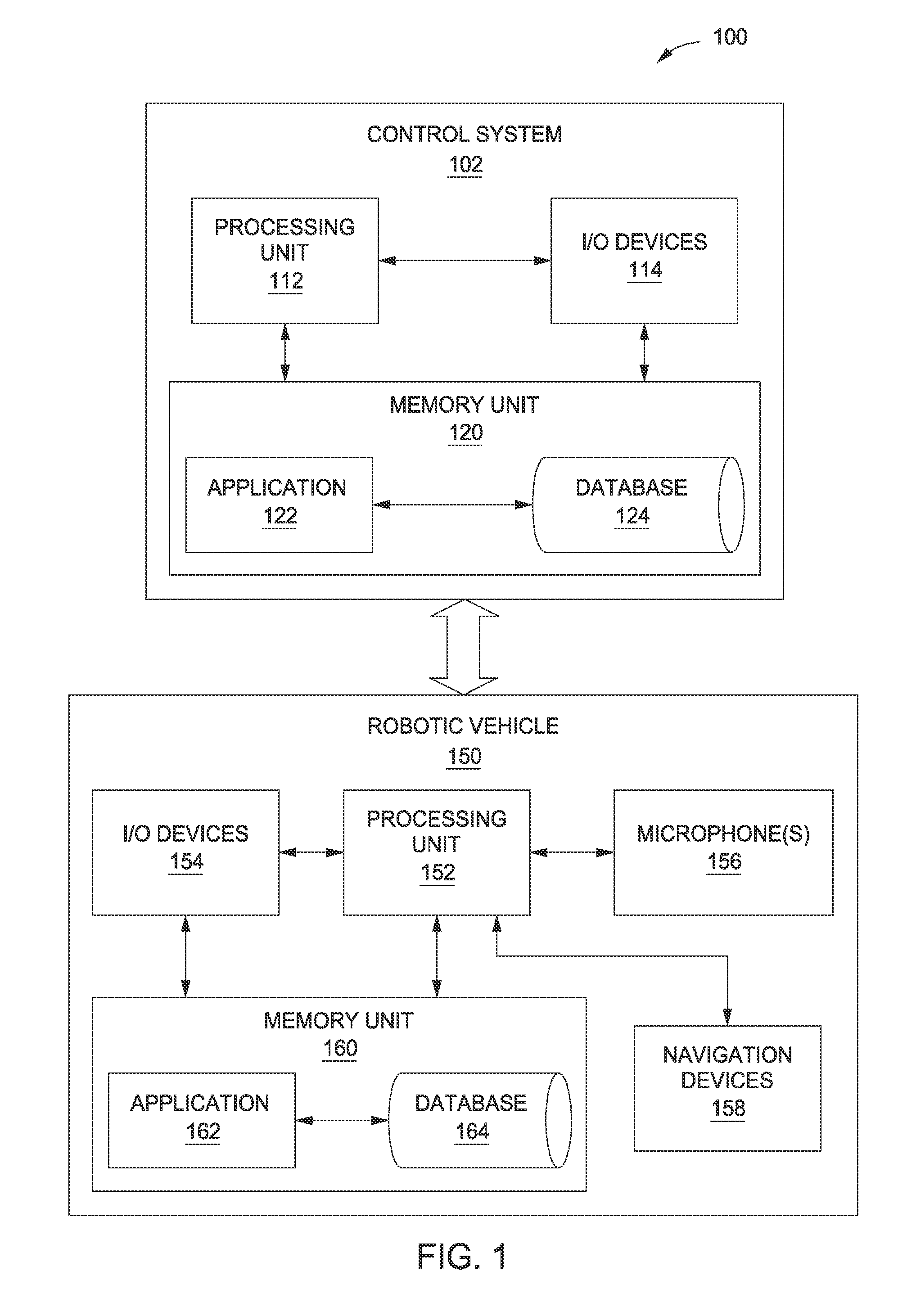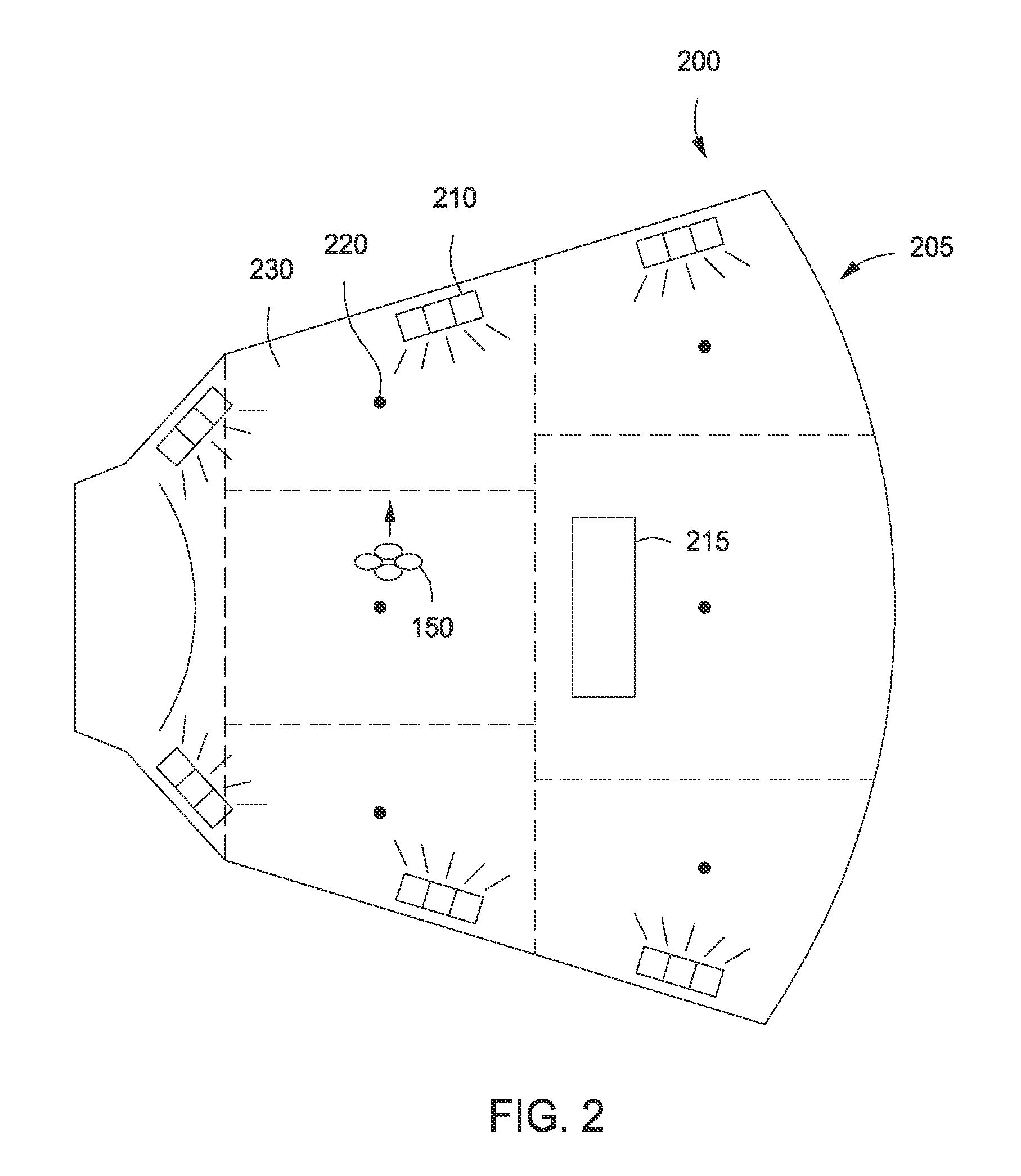Techniques for autonomously calibrating an audio system
a technology of autonomous calibration and audio system, which is applied in the field of audio signal processing, can solve the problems of affecting the acoustic characteristics of the venue, consuming a lot of time, and not being able to accurately calibrate the audio system, etc., and achieves the effect of effective calibration
- Summary
- Abstract
- Description
- Claims
- Application Information
AI Technical Summary
Benefits of technology
Problems solved by technology
Method used
Image
Examples
Embodiment Construction
[0002]Embodiments of the present invention generally relate to audio signal processing and, more specifically, to an autonomous audio calibration system.
[0003]2. Description of the Related Art
[0004]Audio systems, such as systems used in music venues, movie theaters, and sports stadiums, typically include tens or hundreds of speakers, the output of which must be carefully calibrated in order to ensure a pleasant and relatively uniform audio experience across a wide variety of listening positions. Consequently, such audio systems often include advanced digital signal processing platforms that enable a sound engineer to precisely adjust the sound pressure level, frequency characteristics, phase, etc. of each speaker included in the audio system. Accordingly, using a digital signal processing platform, a sound engineer is able to control the sound output of each speaker to compensate for speaker location, frequency response, acoustic characteristics of the venue, and other factors that ...
PUM
 Login to View More
Login to View More Abstract
Description
Claims
Application Information
 Login to View More
Login to View More - R&D
- Intellectual Property
- Life Sciences
- Materials
- Tech Scout
- Unparalleled Data Quality
- Higher Quality Content
- 60% Fewer Hallucinations
Browse by: Latest US Patents, China's latest patents, Technical Efficacy Thesaurus, Application Domain, Technology Topic, Popular Technical Reports.
© 2025 PatSnap. All rights reserved.Legal|Privacy policy|Modern Slavery Act Transparency Statement|Sitemap|About US| Contact US: help@patsnap.com



